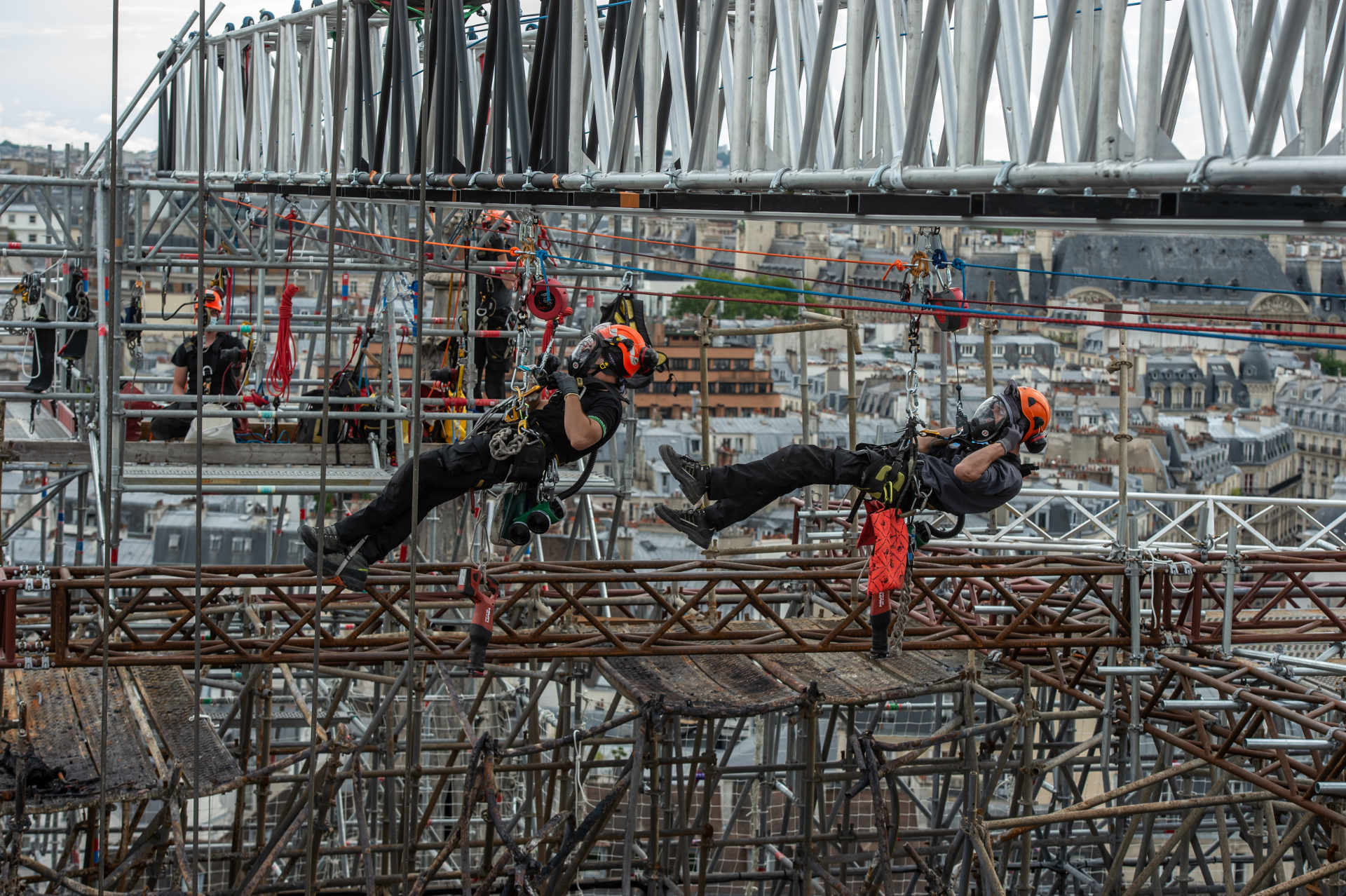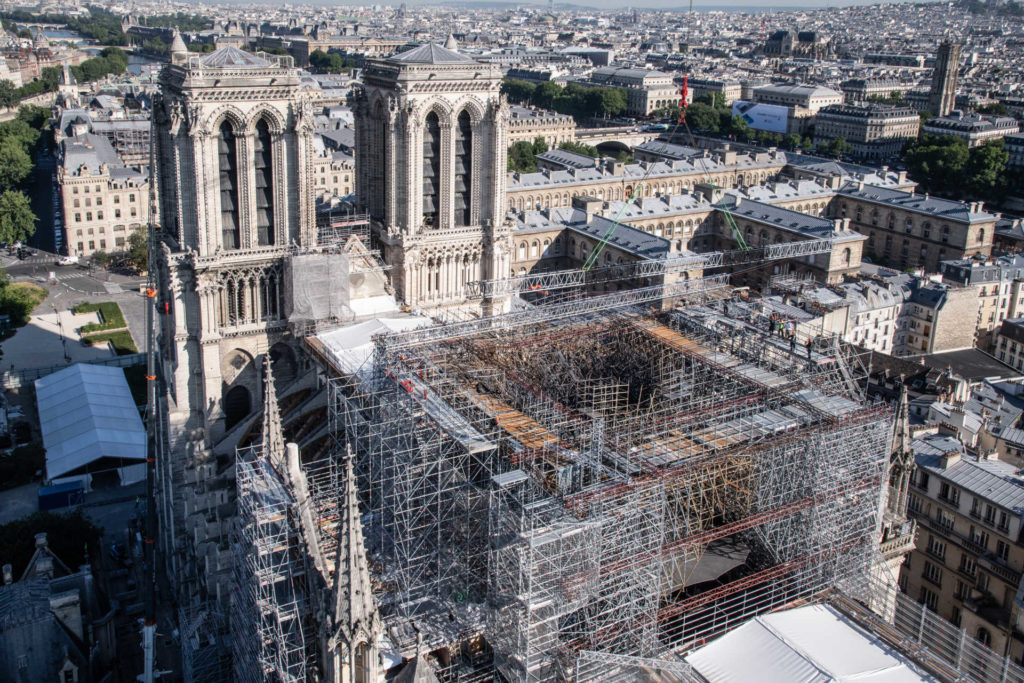
The dismantling of the damaged Notre Dame scaffolding is officially complete
The dismantling of the damaged scaffolding on Notre-Dame de Paris is officially complete since November 24! This essential operation was a key milestone of the Safety Phase, which will ensure Notre-Dame Cathedral’s structural integrity and security.
In April 2019, Notre-Dame Cathedral’s spire was under restoration for critically needed repairs. During the fire of April 15, the scaffolding built for the restoration survived the collapse of the spire but was warped by the heat of the fire. When the flames were extinguished, the 40,000-piece web of tangled, melted metal weighing 200 tons – half of which were over 300 feet high – dangled precariously, posing a serious threat to the cathedral.
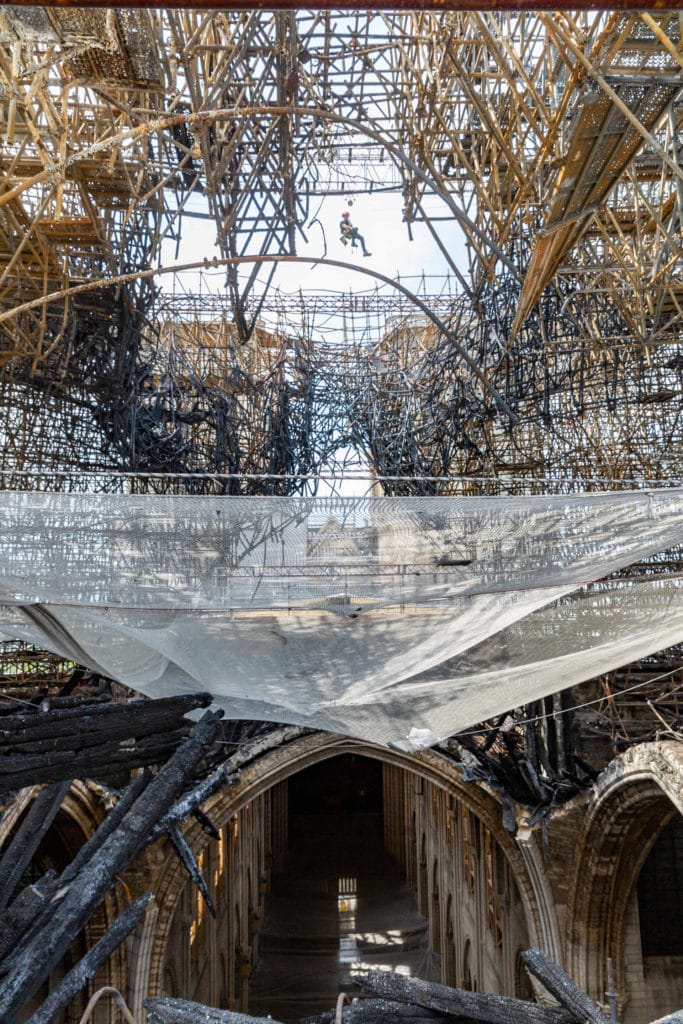
Un cordiste inspecte l’échafaudage sinistré – 3 juin 2020 © C2RMF / Alexis Komenda
Because of its structural instability, the removal of the burned scaffolding was a complex process that required careful preparation.
The Scaffolding Removal Process
Measures had to be taken so the work could proceed in absolute safety – for both Notre-Dame Cathedral and the workers. Before the scaffolding removal work could begin on June 8, 2020, monitors were placed on the scaffolding to measure any shifts of the metal web, warning those below of any movement that might lead to total collapse. If the sensors detected a significant shift, they triggered alarm bells that required everyone inside the Cathedral on the ground to exit.
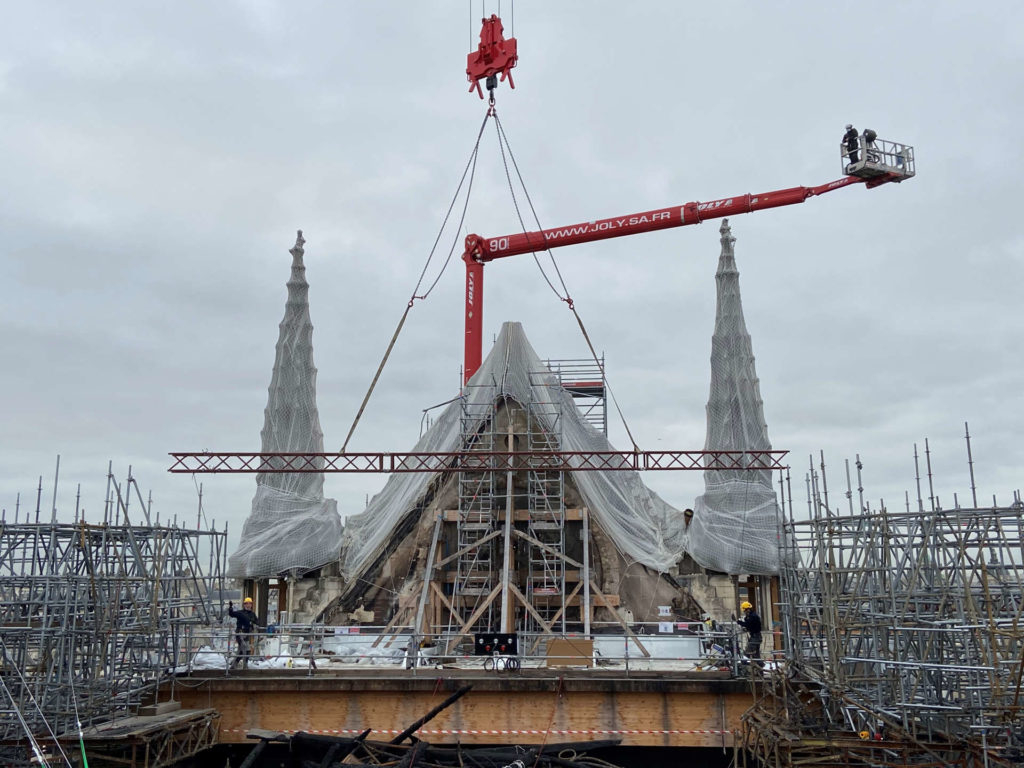
© Didier Cuiset / Europe Echafaudage
Then, a secondary structure of metal beams was built on three levels to stabilize the burned scaffolding and help prevent the risk of collapse. The structure was framed on both sides by a second, new scaffolding to install metal beams that allowed rope access so workers could descend into the heart of the burned scaffolding.
For the first part of the removal process, the accessible parts of the scaffolding were dismantled individually by hand. Specially trained rope access technicians rappelled into the structure as close as they could, to cut away the charred parts and molten metal tubes away from each other. The pieces removed were collected in a basket suspended between them. This meticulous and labor-intensive process was completed in mid-August.
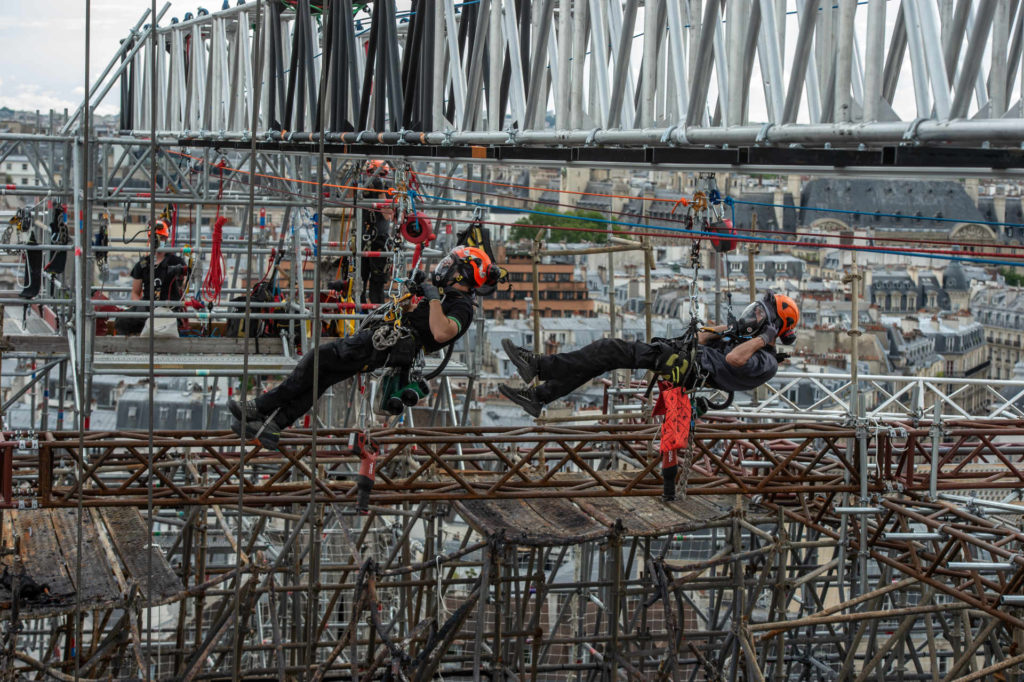
Watch a time-lapse of the scaffolding removal:
Next, scaffolders were able to take over to complete the overall project, removing the rest of the scaffolding with a large tower crane. Here again, special considerations had to be taken. Since the crane lift cannot operate in winds blowing above 22 miles per hour, a special operation was created for the final part of the removal to occur in the fall, taking advantage of the most favorable weather conditions.
At the end of October, the scaffolding was separated into four stable and independent sets, which made it possible for the tower crane to remove a large wooden beam suspended above the crossing of the transept, which threatened to fall into the interior of the Cathedral below.
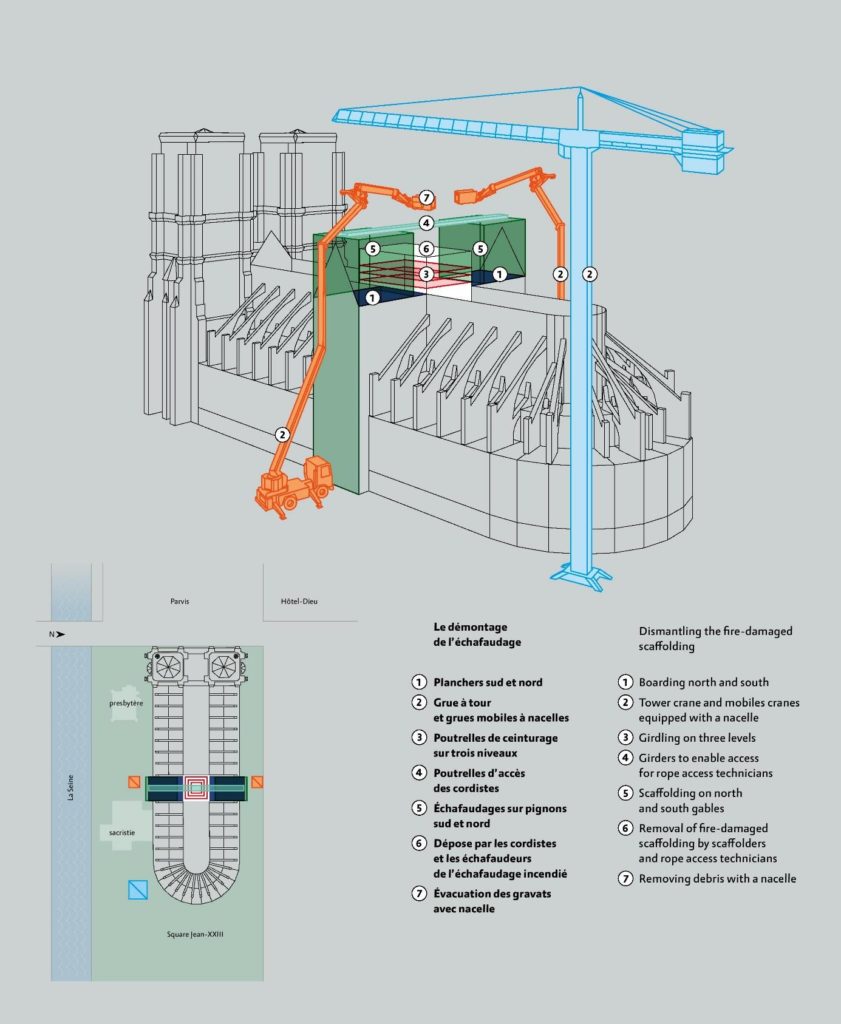
The dismantling was completed on November 24, 2020. Minister of Culture Roselyne Bachelot and Army General Jean-Louis Georgelin, President of the public establishment responsible for the conservation and restoration of Notre-Dame de Paris, were present to mark the occasion, as was Marc Guillaume, Prefect of the Ile-de-France Region and Monsignor Chauvet, Rector of Notre-Dame Cathedral.
“I would like to thank all the scaffolders, rope access technicians, aerial platform workers and crane operators who worked tirelessly to carry out this operation. The threat that this scaffolding posed to the cathedral has now been lifted. We will be able to get down to the last stages of securing the structure,”
said Army General Jean-Louis Georgelin.
Next Steps for Notre-Dame Cathedral’s Reconstruction
Now that the damaged scaffolding has been completely dismantled, the next stage of reconstruction work can begin. First, workers will begin the installation of a waterproof covering across the holes in the vaults where the roof once was – a type of temporary umbrella – to keep water out of the transept crossing. They will also continue securing the expanse of the crossing vault, which is integral to shore up the Cathedral’s structure from collapsing in on itself. Then, rope access technicians will finish removing the remaining debris and cleaning the four vaults adjacent to the crossing of the transept. This last operation will allow the Chief Architects of Historic Monuments to refine their plans, prior to restoration work.
Click here for more photos of Notre-Dame Cathedral’s progress.
